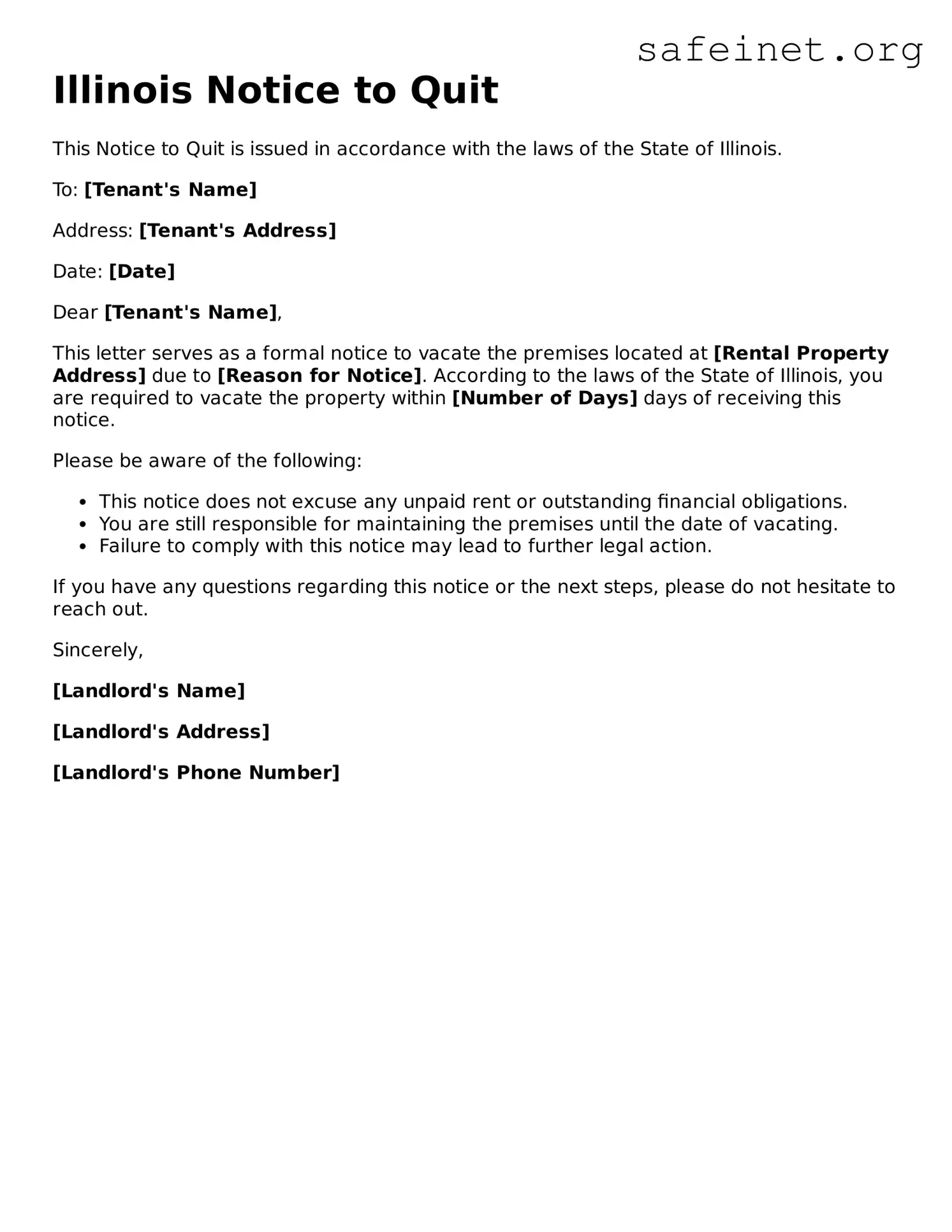What is the Illinois Notice to Quit form?
The Illinois Notice to Quit form is a legal document that a landlord issues to a tenant to inform them that they must vacate the rental property. This is often the first step in the eviction process and specifies a deadline for the tenant to leave the premises. It is commonly used when a tenant has failed to pay rent or violated other terms of the lease agreement.
When should a landlord use the Notice to Quit?
A landlord should use the Notice to Quit when a tenant has breached their lease agreement, either by not paying rent or by engaging in behavior that violates the lease terms. This notice serves as a formal notification before further legal action is pursued.
How much time does a tenant have to vacate after receiving the Notice to Quit?
The time a tenant has to vacate the property varies based on the reason for the notice. For non-payment of rent, tenants typically have 5 days from the receipt of the notice to pay the overdue rent or vacate. For other violations, such as illegal activity, tenants might be given a shorter time frame, often around 10 days.
Does the Notice to Quit need to be served in person?
No, the Notice to Quit does not have to be served in person. It can be delivered through several methods, including mailing it to the tenant’s address or posting it on the door of the rental unit. However, it's crucial to follow the proper delivery methods as outlined by Illinois law to ensure its validity.
What happens if a tenant does not vacate the property by the deadline?
If a tenant does not vacate the property by the deadline specified in the Notice to Quit, the landlord may proceed with filing an eviction lawsuit. This legal process can take time and leads to court proceedings where both parties can present their cases.
Can a tenant contest the Notice to Quit?
Yes, a tenant can contest the Notice to Quit. If they believe the notice was unjust or if they have resolved the issue (such as paying overdue rent), they have the right to defend against an eviction in court. It’s advisable for tenants to seek legal assistance to understand their rights and options.
Is the Notice to Quit the same as an eviction notice?
No, the Notice to Quit and an eviction notice are not the same. The Notice to Quit is the initial step that informs the tenant they must leave the property. An eviction notice comes into play if the tenant fails to respond to the Notice to Quit appropriately, leading to further legal actions by the landlord.
What should landlords include in the Notice to Quit?
Landlords should include critical information in the Notice to Quit, such as the tenant's name, the address of the rental property, the specific reasons for the notice, and the exact date by which the tenant must vacate. Clarity and specificity can help avoid misunderstandings.
Are there specific forms for the Notice to Quit in Illinois?
Yes, Illinois provides specific templates for the Notice to Quit that landlords can use. These forms can be found on legal websites or through local courts. Using a proper form can help ensure that the notice meets legal requirements and is enforceable in court if needed.
What resources are available for tenants who receive a Notice to Quit?
Tenants who receive a Notice to Quit have several resources available to them. Local legal aid organizations can offer assistance. Additionally, tenants may also consult with attorneys or find information online about tenant rights and the eviction process to better understand their situation.
